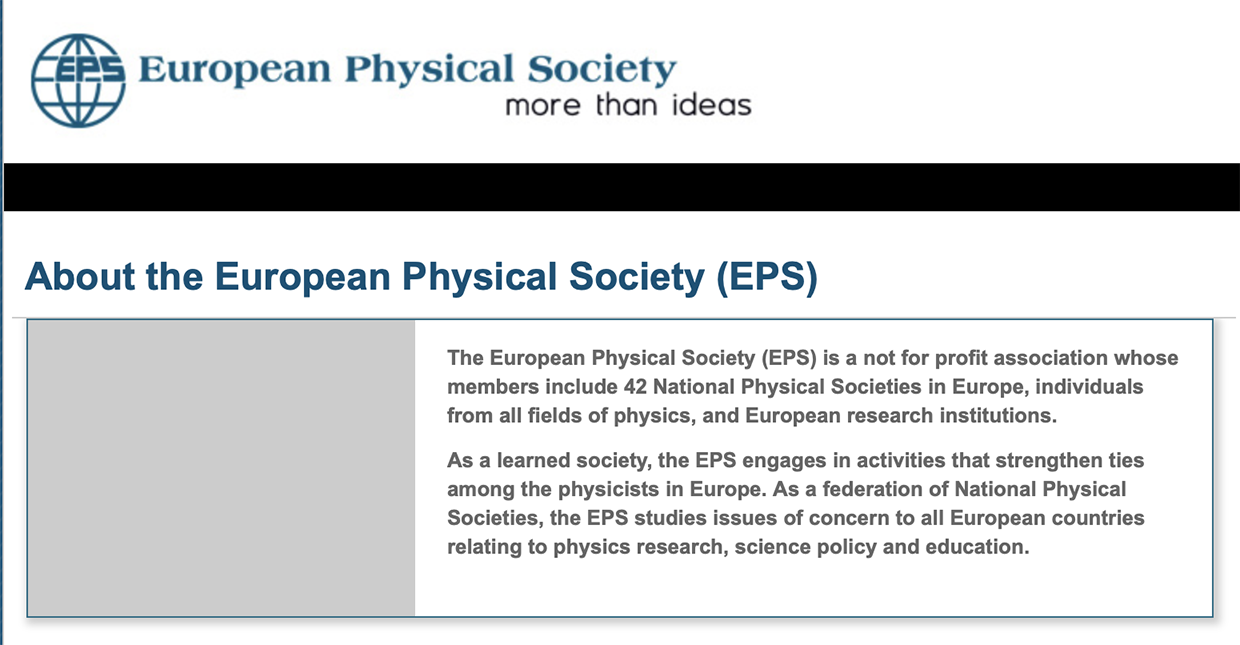Math-Science Literature Lecture Series
Beginning in Spring 2020, the CMSA began hosting a lecture series on literature in the mathematical sciences, with a focus on significant developments in mathematics that have influenced the discipline, and the lifetime accomplishments of significant scholars. Talks will take place throughout the semester. All talks take place virtually. You must register to attend. Recordings will be posted to this page.
Written articles will accompany each lecture in this series and be available as part of the publication The Literature and History of Mathematical Science.
Previous Lectures
November 9, 2022 | 2:00 - 3:30 pm
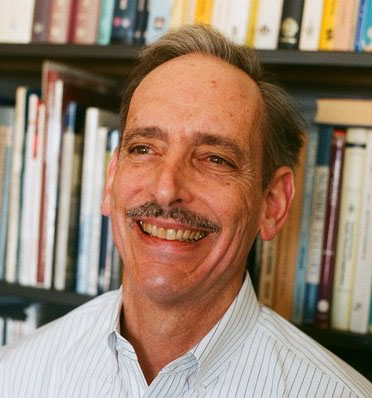
Hugh Woodin (Harvard University)
Location: Room G10, CMSA, 20 Garden Street, Cambridge MA Virtual via Zoom Webinar
Title: Large cardinals and small sets: The AD+ Duality Program
Abstract: The determinacy axiom, AD, was introduced by Mycielski and Steinhaus over 60 years ago as an alternative to the Axiom of Choice for the study of arbitrary sets of real numbers. The modern view is that determinacy axioms concern generalizations of the borel sets, and deep connections with large cardinal axioms have emerged.
The study of determinacy axioms has led to a specific technical refinement of AD, this is the axiom AD+. The further connections with large axioms have in turn implicitly led to a duality program, this is the AD+ Duality Program.
The main open problems here are intertwined with those of the Inner Model Program, which is the central program in the study of large cardinal axioms.
This has now all been distilled into a series of specific conjectures.
Talk chair: Horng-Tzer Yau (Harvard Mathematics & CMSA)
Moderator: Alejandro Poveda Ruzafa (Harvard CMSA)
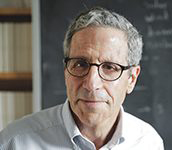
Eric Maskin (Harvard University) Three Introductory Lectures on Game Theory for Mathematicians
April 18, 2022 | 9:30 - 11:00 am ET
Title: Game Theory Basics and Classical Existence Theorems
Abstract: Games in extensive and normal form. Equilibrium existence theorems by Nash, von Neumann, and Zermelo
Talk chairs: Scott Kominers, Sergiy Verstyuk
April 20, 2022 | 9:30 - 11:00 am ET
Title: Mechanism Design
Abstract: Given a social goal, under what circumstances can we design a game to achieve that goal?
Talk chairs: Scott Kominers, Sergiy Verstyuk
April 22, 2022 | 9:30 - 11:00 am ET
Title: Auction Theory
Abstract: Equivalences among four standard auctions: the high-bid auction (the high bidder wins and pays her bid); the second-bid auction (the high bidder wins and pays the second-highest bid); the Dutch auction (the auctioneer lowers the price successively until some bidder is willing to pay); and the English auction (bidders raise their bids successively until no one wants to bid higher).
Talk chairs: Scott Kominers, Sergiy Verstyuk
SLIDES | VIDEO Answers to Questions from Talks 2 and 3
December 9, 2021 | 9:30 - 11:00 am ET
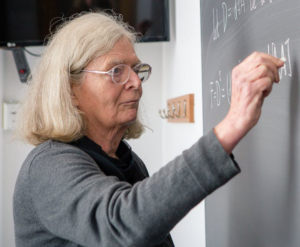
Karen Uhlenbeck (Institute for Advanced Study)
Title: The Noether Theorems in Geometry: Then and Now
Abstract: The 1918 Noether theorems were a product of the general search for energy and momentum conservation in Einstein’s newly formulated theory of general relativity. Although widely referred to as the connection between symmetry and conservation laws, the theorems themselves are often not understood properly and hence have not been as widely used as they might be. In the first part of the talk, I outline a brief history of the theorems, explain a bit of the language, translate the first theorem into coordinate invariant language and give a few examples. I will mention only briefly their importance in physics and integrable systems. In the second part of the talk, I describe why they are still relevant in geometric analysis: how they underlie standard techniques and why George Daskalopoulos and I came to be interested in them for our investigation into the best Lipschitz maps of Bill Thurston. Some applications to integrals on a domain a hyperbolic surface leave open possibilities for applications to integrals on domains which are locally symmetric spaces of higher dimension. The talk finishes with an example or two from the literature.
Talk Chair: Laura DeMarco
January 13, 2021 | 9:00 - 10:30am ET

|
Don Zagier (Max Planck Institute for Mathematics and International Centre for Theoretical Physics) Title: Quantum topology and new types of modularity Abstract: The talk concerns two fundamental themes of modern 3-dimensional topology and their unexpected connection with a theme coming from number theory. A deep insight of William Thurston in the mid-1970s is that the vast majority of complements of knots in the 3-sphere, or more generally of 3-manifolds, have a unique metric structure as hyperbolic manifolds of constant curvature -1, so that 3-dimensional topology is in some sense not really a branch of topology at all, but of differential geometry. In a different direction, the work of Vaughan Jones and Ed Witten in the late 1980s gave rise to the field of Quantum Topology, in which new types of invariants of knot complements and 3-manifolds are introduced that have their origins in ideas coming from quantum field theory. These two themes then became linked by Kashaev’s famous Volume Conjecture, now some 25 years old, which says that the Kashaev invariant _N of a hyperbolic knot K (this is a quantum invariant defined for each positive integer N and whose values are algebraic numbers) grows exponentially as N tends to infinity with an exponent proportional to the hyperbolic volume of the knot complement. About 10 years ago, I was led by numerical experiments to the discovery that Kashaev’s invariant could be upgraded to an invariant having rational numbers as its argument (with the original invariant being the value at 1/N) and that the Volume Conjecture then became part of a bigger story saying that the new invariant has some sort of strange transformation property under the action x -> (ax+b)/(cx+d) of the modular group SL(2,Z) on the argument. This turned out to be only the beginning of a fascinating and multi-faceted story relating quantum invariants, q-series, modularity, and many other topics. In the talk, which is intended for a general mathematical audience, I would like to recount some parts of this story, which is joint work with Stavros Garoufalidis (and of course involving contributions from many other authors). The “new types of modularity” in the title refer to a specific byproduct of these investigations, namely that there is a generalization of the classical notion of holomorphic modular form – which plays an absolutely central role in modern number theory – to a new class of holomorphic functions in the upper half-plane that no longer satisfy a transformation law under the action of the modular group, but a weaker extendability property instead. This new class, called "holomorphic quantum modular forms", turns out to contain many other functions of a more number-theoretical nature as well as the original examples coming from quantum invariants. Talk chair: Mark Kisin |
January 27, 2021 | 9:00 - 10:30pm ET
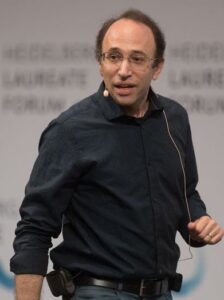
|
Dan Spielman (Yale University) Title: Discrepancy Theory and Randomized Controlled Trials Abstract: Discrepancy theory tells us that it is possible to partition vectors into sets so that each set looks surprisingly similar to every other. By “surprisingly similar” we mean much more similar than a random partition. I will begin by surveying fundamental results in discrepancy theory, including Spencer’s famous existence proofs and Bansal’s recent algorithmic realizations of them. Randomized Controlled Trials are used to test the effectiveness of interventions, like medical treatments. Randomization is used to ensure that the test and control groups are probably similar. When we know nothing about the experimental subjects, uniform random assignment is the best we can do. When we know information about the experimental subjects, called covariates, we can combine the strengths of randomization with the promises of discrepancy theory. This should allow us to obtain more accurate estimates of the effectiveness of treatments, or to conduct trials with fewer experimental subjects. I will introduce the Gram-Schmidt Walk algorithm of Bansal, Dadush, Garg, and Lovett, which produces random solutions to discrepancy problems. I will then explain how Chris Harshaw, Fredrik Sävje, Peng Zhang, and I use this algorithm to improve the design of randomized controlled trials. Our Gram-Schmidt Walk Designs have increased accuracy when the experimental outcomes are correlated with linear functions of the covariates, and are comparable to uniform random assignments in the worst case. Talk chair: Salil Vadhan |
February 23, 2021 | 9:00 - 10:30am ET

|
Kenji Fukaya (Simons Center for Geometry and Physics) Title: Homological (homotopical) algebra and moduli spaces in Topological Field theories Abstract: Moduli spaces of various gauge theory equations and of various versions of (pseudo) holomorphic curve equations have played important role in geometry in these 40 years. Started with Floer’s work people start to obtain more sophisticated object such as groups, rings, or categories from (system of) moduli spaces. I would like to survey some of those works and the methods to study family of moduli spaces systematically. Talk chair: Peter Kronheimer |
March 23, 2021 | 5:00 - 6:30pm ET
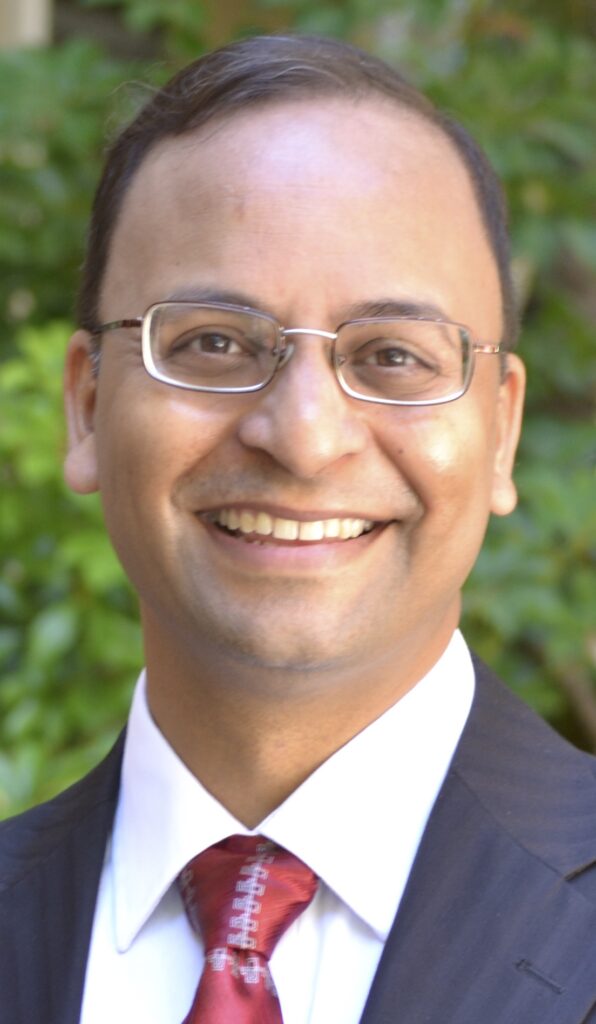
|
Amit Sahai (UCLA) Title: Indistinguishability Obfuscation: How to Hide Secrets within Software Abstract: At least since the initial public proposal of public-key cryptography based on computational hardness conjectures (Diffie and Hellman, 1976), cryptographers have contemplated the possibility of a "one-way compiler" that translates computer programs into "incomprehensible" but equivalent forms. And yet, the search for such a "one-way compiler" remained elusive for decades. In this talk, we look back at our community’s attempts to formalize the notion of such a compiler, culminating in our 2001 work with Barak, Goldreich, Impagliazzo, Rudich, Vadhan, and Yang, which proposed the notion of indistinguishability obfuscation (iO). Roughly speaking, iO requires that the compiled versions of any two equivalent programs (with the same size and running time) be indistinguishable to any efficient adversary. Leveraging the notion of punctured programming, introduced in our work with Waters in 2013, well over a hundred papers have explored the remarkable power of iO. We’ll then discuss the intense effort that recently culminated in our 2020 work with Jain and Lin, finally showing how to construct iO in such a way that, for the first time, we can prove the security of our iO scheme based on well-studied computational hardness conjectures in cryptography. Talk chair: Sergiy Verstyuk |
March 30, 2021 | 9:00 – 10:30am ET
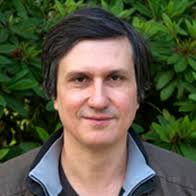
|
Maxim Kontsevich (IHÉS) Title: On the History of quantum cohomology and homological mirror symmetry Abstract: About 30 years ago, string theorists made remarkable discoveries of hidden structures in algebraic geometry. First, the usual cup-product on the cohomology of a complex projective variety admits a canonical multi-parameter deformation to so-called quantum product, satisfying a nice system of differential equations (WDVV equations). The second discovery, even more striking, is Mirror Symmetry, a duality between families of Calabi-Yau varieties acting as a mirror reflection on the Hodge diamond. Later it was realized that the quantum product belongs to the realm of symplectic geometry, and a half of mirror symmetry (called Homological Mirror Symmetry) is a duality between complex algebraic and symplectic varieties. The search of correct definitions and possible generalizations lead to great advances in many domains, giving mathematicians new glasses, through which they can see familiar objects in a completely new way. I will review the history of major mathematical advances in the subject of HMS, and the swirl of ideas around it. Talk chair: Paul Seidel |
April 6, 2021 | 9:00 – 10:30am ET
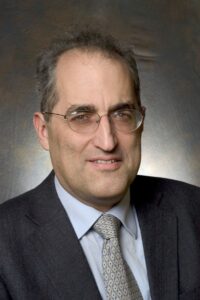
|
Edward Witten (IAS) Title: Isadore Singer’s Work on Analytic Torsion Abstract: I will review two famous papers of Ray and Singer on analytic torsion written approximately half a century ago. Then I will sketch the influence of analytic torsion in a variety of areas of physics including anomalies, topological field theory, and string theory. This talk is part of a subprogram of the Mathematical Science Literature Lecture series, A Memorial Conference for the Founders of Index Theory: Atiyah, Bott, Hirzebruch and Singer. |
April 8, 2021 | 9:00 – 10:30am ET

|
Peter Shor (MIT) Title: Quantum error correcting codes and fault tolerance Abstract: We will go over the fundamentals of quantum error correction and fault tolerance and survey some of the recent developments in the field. Talk chair: Zhengwei Liu |
April 16, 2021 | 1:00 – 2:30pm ET

|
Yi Ma (University of California, Berkeley) Title: Deep Networks from First Principles Abstract: In this talk, we offer an entirely “white box’’ interpretation of deep (convolution) networks from the perspective of data compression (and group invariance). In particular, we show how modern deep layered architectures, linear (convolution) operators and nonlinear activations, and even all parameters can be derived from the principle of maximizing rate reduction (with group invariance). All layers, operators, and parameters of the network are explicitly constructed via forward propagation, instead of learned via back propagation. All components of so-obtained network, called ReduNet, have precise optimization, geometric, and statistical interpretation. There are also several nice surprises from this principled approach: it reveals a fundamental tradeoff between invariance and sparsity for class separability; it reveals a fundamental connection between deep networks and Fourier transform for group invariance – the computational advantage in the spectral domain (why spiking neurons?); this approach also clarifies the mathematical role of forward propagation (optimization) and backward propagation (variation). In particular, the so-obtained ReduNet is amenable to fine-tuning via both forward and backward (stochastic) propagation, both for optimizing the same objective. This is joint work with students Yaodong Yu, Ryan Chan, Haozhi Qi of Berkeley, Dr. Chong You now at Google Research, and Professor John Wright of Columbia University. Talk chair: Harry Shum |
April 20, 2021 | 9:00 – 10:30am ET

|
Dan Freed (The University of Texas at Austin) Title: The Atiyah-Singer Index Theorem Abstract: The story of the index theorem ties together the Gang of Four—Atiyah, Bott, Hirzebruch, and Singer—and lies at the intersection of analysis, geometry, and topology. In the first part of the talk I will recount high points in the early developments. Then I turn to subsequent variations and applications. Throughout I emphasize the role of the Dirac operator. This talk is part of a subprogram of the Mathematical Science Literature Lecture series, A Memorial Conference for the Founders of Index Theory: Atiyah, Bott, Hirzebruch and Singer. Talk chair: Cumrun Vafa |
April 27, 2021 | 9:00 – 10:30am ET

|
Frances Kirwan (University of Oxford) Title: Moment maps and the Yang-Mills functional Abstract: In the early 1980s Michael Atiyah and Raoul Bott wrote two influential papers, ‘The Yang-Mills equations over Riemann surfaces’ and ‘The moment map and equivariant cohomology’, bringing together ideas ranging from algebraic and symplectic geometry through algebraic topology to mathematical physics and number theory. The aim of this talk is to explain their key insights and some of the new directions towards which these papers led. This talk is part of a subprogram of the Mathematical Science Literature Lecture series, A Memorial Conference for the Founders of Index Theory: Atiyah, Bott, Hirzebruch, and Singer. Talk chair: Peter Kronheimer |
Rescheduled date: May 25|9:00 – 10:30am ET

|
Claire Voisin (Collège de France) Title: K-theory and characteristic classes in topology and complex geometry (a tribute to Atiyah and Hirzebruch) Abstract: We will discuss the K-theory of complex vector bundles on topological spaces and of holomorphic vector bundles on complex manifolds. A central question is the relationship between K-theory and cohomology. This is done in topology by constructing characteristic classes, but other constructions appear in the holomorphic or algebraic context. We will discuss the Hirzebruch-Riemann-Roch formula, the Atiyah-Hirzebruch spectral sequence, the role of complex cobordism, and other tools developed later on, like the Bloch-Ogus spectral sequence. This talk is part of a subprogram of the Mathematical Science Literature Lecture series, A Memorial Conference for the Founders of Index Theory: Atiyah, Bott, Hirzebruch, and Singer. Talk chair: Baohua Fu |
June 15, 2021 | 11:00am – 12:30pm ET
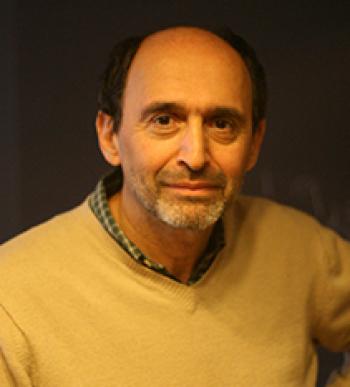
|
Sergiu Klainerman (Princeton University) Title: Nonlinear stability of Kerr black holes for small angular momentum Abstract: According to a well-known conjecture, initial data sets, for the Einstein vacuum equations, sufficiently close to a Kerr solution with parameters $a, m$, $|a|/m <1$, have maximal developments with complete future null infinity and with domain of outer communication (i.e complement of a future event horizon) which approaches (globally) a nearby Kerr solution. I will describe the main ideas in my recent joint work with Jeremie Szeftel concerning the resolution of the conjecture for small angular momentum, i.e. $, $|a|/m $ sufficiently small. The work, ArXiv:2104.11857v1, also depends on forthcoming work on solutions of nonlinear wave equations in realistic perturbations of Kerr, with Szeftel and Elena Giorgi, which I will also describe. Talk char: Lydia Bieri |
Fall 2020
September 25, 2020 | 9:00 – 10:30am ET
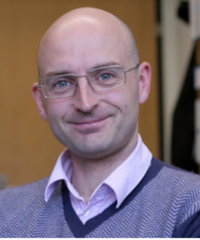
|
Camillo De Lellis (IAS) Title: Area-minimizing integral currents and their regularity Abstract: Caccioppoli sets and integral currents (their generalization in higher codimension) were introduced in the late fifties and early sixties to give a general geometric approach to the existence of area-minimizing oriented surfaces spanning a given contour. These concepts started a whole new subject which has had tremendous impacts in several areas of mathematics: superficially through direct applications of the main theorems, but more deeply because of the techniques which have been invented to deal with related analytical and geometrical challenges. In this lecture I will review the basic concepts, the related existence theory of solutions of the Plateau problem, and what is known about their regularity. I will also touch upon several fundamental open problems which still defy our understanding. Talk Chair: William Minicozzi |
September 25, 2020 | 12:00 – 1:30pm ET
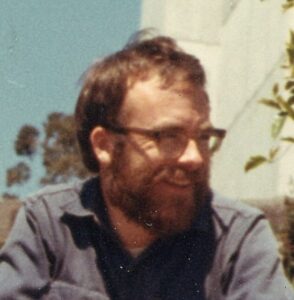
|
William Casselman (University of British Columbia) Title: The origins of Langlands’ conjectures Abstract: Langlands has made many contributions to number theory, but the principal one is probably his discovery in 1966–67, followed by work in subsequent years, of the role of the dual group in the theories of automorphic forms and L-functions. In order to try to understand what this amounted to, I will trace the origins of this development through work of Ramanujan, Hecke, Siegel, Maass, Selberg, and other mathematicians of the twentieth century. Talk chair: Wilfried Schmid |
September 28, 2020 | 9:00 – 10:30am ET
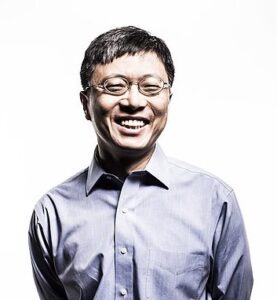
|
Harry Shum (Tsinghua University) Title: From Deep Learning to Deep Understanding Abstract: In this talk I will discuss a couple of research directions for robust AI beyond deep neural networks. The first is the need to understand what we are learning, by shifting the focus from targeting effects to understanding causes. The second is the need for a hybrid neural/symbolic approach that leverages both commonsense knowledge and massive amount of data. Specifically, as an example, I will present some latest work at Microsoft Research on building a pre-trained grounded text generator for task-oriented dialog. It is a hybrid architecture that employs a large-scale Transformer-based deep learning model, and symbol manipulation modules such as business databases, knowledge graphs and commonsense rules. Unlike GPT or similar language models learnt from data, it is a multi-turn decision making system which takes user input, updates the belief state, retrieved from the database via symbolic reasoning, and decides how to complete the task with grounded response. Talk chair: Shing-Tung Yau |
September 28, 2020 | 12:30 – 2:00pm ET

|
Michael Freedman (Microsoft – Station Q) Title: A personal story of the 4D Poincare conjecture Abstract: The proof of PC4 involved the convergence of several historical streams. To get started: high dimensional manifold topology (Smale), a new idea on how to study 4-manifolds (Casson), wild “Texas” topology (Bing). Once inside the proof: there are three submodules: Casson towers come to life (in the sense of reproduction), a very intricate explicit shrinking argument (provided by Edwards), and the “blind fold” shrinking argument (which in retrospect is in the linage of Brown’s proof of the Schoenflies theorem). Beyond those mentioned: Kirby, Cannon, Ancel, Quinn, and Starbird helped me understand my proof. I will discuss the main points and how they fit together. Talk Chair: Peter Kronheimer |
September 30, 2020 | 9:00 – 10:30am ET

|
Claire Voisin (Collège de France) Title: Hodge structures and the topology of algebraic varieties Abstract: We review the major progress made since the 50’s in our understanding of the topology of complex algebraic varieties. Most of the results we will discuss rely on Hodge theory, which has some analytic aspects giving the Hodge and Lefschetz decompositions, and the Hodge-Riemann relations. We will see that a crucial ingredient, the existence of a polarization, is missing in the general Kaehler context. We will also discuss some results and problems related to algebraic cycles and motives. Talk chair: Joe Harris |
September 30, 2020 | 12:00 – 1:30pm ET
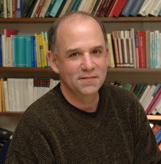
|
Ralph Cohen (Stanford University) Title: Immersions of manifolds and homotopy theory Abstract: The interface between the study of the topology of differentiable manifolds and algebraic topology has been one of the richest areas of work in topology since the 1950’s. In this talk I will focus on one aspect of that interface: the problem of studying embeddings and immersions of manifolds using homotopy theoretic techniques. I will discuss the history of this problem, going back to the pioneering work of Whitney, Thom, Pontrjagin, Wu, Smale, Hirsch, and others. I will discuss the historical applications of this homotopy theoretic perspective, going back to Smale’s eversion of the 2-sphere in 3-space. I will then focus on the problems of finding the smallest dimension Euclidean space into which every n-manifold embeds or immerses. The embedding question is still very much unsolved, and the immersion question was solved in the 1980’s. I will discuss the homotopy theoretic techniques involved in the solution of this problem, and contributions in the 60’s, 70’s and 80’s of Massey, Brown, Peterson, and myself. I will also discuss questions regarding the best embedding and immersion dimensions of specific manifolds, such has projective spaces. Finally, I will end by discussing more modern approaches to studying spaces of embeddings due to Goodwillie, Weiss, and others. This talk will be geared toward a general mathematical audience. Talk chair: Michael Hopkins |
October 2, 2020 | 10:45 – 12:15pm ET

|
Vyacheslav V. Shokurov (Johns Hopkins University) Title: Birational geometry Abstract: About main achievements in birational geometry during the last fifty years. Talk chair: Caucher Birkar |
October 5, 2020 | 8:00 – 9:30pm ET

|
Yujiro Kawamata (University of Tokyo) Title: Kunihiko Kodaira and complex manifolds Abstract: Kodaira’s motivation was to generalize the theory of Riemann surfaces in Weyl’s book to higher dimensions. After quickly recalling the chronology of Kodaira, I will review some of Kodaira’s works in three sections on topics of harmonic analysis, deformation theory and compact complex surfaces. Each topic corresponds to a volume of Kodaira’s collected works in three volumes, of which I will cover only tiny parts. Talk chair: Baohua Fu |
November 13, 2020 | 8:00 – 9:30am ET

|
Edward Witten (IAS) Title: Knot Invariants From Gauge Theory in Three, Four, and Five Dimensions Abstract: I will explain connections between a sequence of theories in two, three, four, and five dimensions and describe how these theories are related to the Jones polynomial of a knot and its categorification. Talk chair: Cliff Taubes |
November 16, 2020 | 8:00 – 9:30am ET
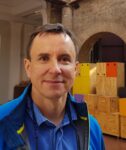
|
Andrei Okounkov (Columbia University) Title: Classical and quantum integrable systems in enumerative geometry Abstract: For more than a quarter of a century, thanks to the ideas and questions originating in modern high-energy physics, there has been a very fruitful interplay between enumerative geometry and integrable system, both classical and quantum. While it is impossible to summarize even the most important aspects of this interplay in one talk, I will try to highlight a few logical points with the goal to explain the place and the role of certain more recent developments. Talk chair: Cumrun Vafa |
November 18, 2020 | 8:00 – 9:30am ET

|
Caucher Birkar (University of Cambridge) Title: Log Calabi-Yau fibrations Abstract: Fano and Calabi-Yau varieties play a fundamental role in algebraic geometry, differential geometry, arithmetic geometry, mathematical physics, etc. The notion of log Calabi-Yau fibration unifies Fano and Calabi-Yau varieties, their fibrations, as well as their local birational counterparts such as flips and singularities. Such fibrations can be examined from many different perspectives. The purpose of this talk is to introduce the theory of log Calabi-Yau fibrations, to remind some known results, and to state some open problems. |
November 20, 2020 | 8:00 – 9:30am ET
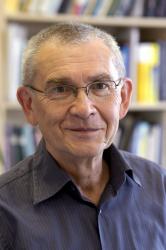
|
Yuri Manin (Max Planck Institute for Mathematics) Title: Homotopy spectra and Diophantine equations Abstract: For a long stretch of time in the history of mathematics, Number Theory and Topology formed vast, but disjoint domains of mathematical knowledge. Origins of number theory can be traced back to the Babylonian clay tablet Plimpton 322 (about 1800 BC) that contained a list of integer solutions of the “Diophantine” equation $a^2+b^2=c^2$: archetypal theme of number theory, named after Diophantus of Alexandria (about 250 BC). Topology was born much later, but arguably, its cousin — modern measure theory, — goes back to Archimedes, author of Psammites (“Sand Reckoner”), who was approximately a contemporary of Diophantus. In modern language, Archimedes measures the volume of observable universe by counting the number of small grains of sand necessary to fill this volume. Of course, many qualitative geometric models and quantitative estimates of the relevant distances precede his calculations. Moreover, since the estimated numbers of grains of sand are quite large (about $10^{64}$), Archimedes had to invent and describe a system of notation for large numbers going far outside the possibilities of any of the standard ancient systems. The construction of the first bridge between number theory and topology was accomplished only about fifty years ago: it is the theory of spectra in stable homotopy theory. In particular, it connects $Z$, the initial object in the theory of commutative rings, with the sphere spectrum $S$. This connection poses the challenge: discover a new information in number theory using the developed independently machinery of homotopy theory. In this talk based upon the authors’ (Yu. Manin and M. Marcolli) joint research project, I suggest to apply homotopy spectra to the problem of distribution of rational points upon algebraic manifolds. Talk chair: Michael Hopkins |

November 23, 2020 | 8:00 – 9:30am ET
|
Alain Connes (Collège de France) Title: Noncommutative Geometry, the Spectral Aspect Abstract: This talk will be a survey of the spectral side of noncommutative geometry, presenting the new paradigm of spectral triples and showing its relevance for the fine structure of space-time, its large scale structure and also in number theory in connection with the zeros of the Riemann zeta function. Talk chair: Peter Kronheimer |
November 23, 2020 | 10:00 – 11:30am ET
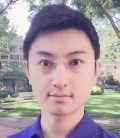
|
Zhengwei Liu (Tsinghua University) Title: Subfactors–in Memory of Vaughan Jones Abstract: Jones initiated modern subfactor theory in early 1980s and investigated this area for his whole academic life. Subfactor theory has both deep and broad connections with various areas in mathematics and physics. One well-known peak in the development of subfactor theory is the discovery of the Jones polynomial, for which Jones won the Fields Metal in 1990. Let us travel back to the dark room at the beginning of the story, to appreciate how radically our viewpoint has changed. Talk chair: Arthur Jaffe |
November 25, 2020 | 9:00 – 10:30am ET
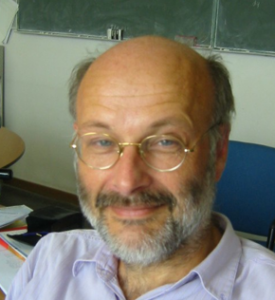
|
Eduard Jacob Neven Looijenga (Tsinghua University & Utrecht University) Title: Theorems of Torelli type Abstract: Given a closed manifold of even dimension 2n, then Hodge showed around 1950 that a kählerian complex structure on that manifold determines a decomposition of its complex cohomology. This decomposition, which can potentially vary continuously with the complex structure, extracts from a non-linear given, linear data. It can contain a lot of information. When there is essentially no loss of data in this process, we say that the Torelli theorem holds. We review the underlying theory and then survey some cases where this is the case. This will include the classical case n=1, but the emphasis will be on K3 manifolds (n=2) and more generally, on hyperkählerian manifolds. These cases stand out, since one can then also tell which decompositions occur. Talk chair: Gerard van der Geer |
December 2, 2020 | 8:00 – 9:30am ET

|
Arthur Jaffe (Harvard University) Title: Is relativity compatible with quantum theory? Abstract: We review the background, mathematical progress, and open questions in the effort to determine whether one can combine quantum mechanics, special relativity, and interaction together into one mathematical theory. This field of mathematics is known as “constructive quantum field theory.” Physicists believe that such a theory describes experimental measurements made over a 70 year period and now refined to 13-decimal-point precision—the most accurate experiments ever performed. Talk chair: Zhengwei Liu |
December 4, 2020 | 8:00 – 9:30am ET
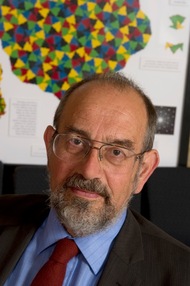
|
Nigel Hitchin (University of Oxford) Title: Michael Atiyah: Geometry and Physics Abstract: In mid-career, as an internationally renowned mathematician, Michael Atiyah discovered that some problems in physics responded to current work in algebraic geometry and this set him on a path to develop an active interface between mathematics and physics which was formative in the links which are so active today. The talk will focus, in a fairly basic fashion, on some examples of this interaction, which involved both applying physical ideas to solve mathematical problems and introducing mathematical ideas to physicists. Talk chair: Peter Kronheimer |
Spring 2020:
March 13, 2020 | 2:00pm ET
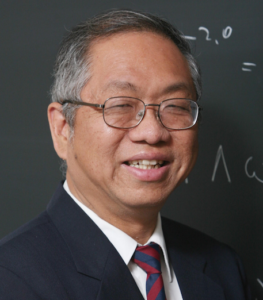
|
Shing-Tung Yau (Harvard) Title: Shiing-Shen Chern as a Great Geometer of 20th Century |
April 15, 2020 | 8:00am ET
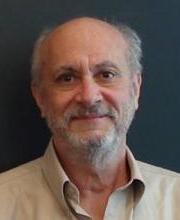
|
Donald Rubin (Harvard) Title: Why do some universities have separate departments of statistics? And are they all anachronisms, destined to follow the path of other dinosaurs? |
May 4, 2020 | 1:00pm ET
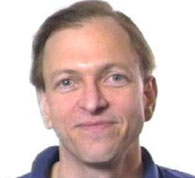
|
Joe Harris (Harvard) Title: Rationality questions in algebraic geometry Abstract: Over the course of the history of algebraic geometry, rationality questions — motivated by both geometric and arithmetic problems — have often driven the subject forward. The rationality or irrationality of cubic hypersurfaces in particular have led to the development of abelian integrals (dimension one), birational geometry (dimension two) and Hodge theory (dimension 3). But there remained much we didn’t understand about the condition of rationality, such as how it behaves in families. However, there has been recent progress: work of Hassett, Tschinkel, Pirutka and others, working with examples in dimension 4, showed that it is in general neither an open condition nor a closed one, but does behave well with respect to specialization. In this talk I’ll try to give an overview of the history of rationality and the current state of our knowledge. |
May 4, 2020 | 3:00pm ET
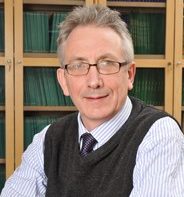
|
Simon Donaldson (Stony Brook) Title: The ADHM construction of Yang-Mills instantons Abstract: In 1978 (Physics Letters 65A) Atiyah, Hitchin, Drinfeld and Manin (ADHM) described a construction of the general solution of the Yang-Mills instanton equations over the 4-sphere using linear algebra. This was a major landmark in the modern interaction between geometry and physics, and the construction has been the scene for much research activity up to the present day. In this lecture we will review the background and the original ADHM proof, using Penrose’s twistor theory and results on algebraic vector bundles over projective 3-space. As time permits, we will also discuss some further developments, for example, the work of Nahm on monopoles and connections to Mukai duality for bundles over complex tori. |
May 5, 2020 | 11:00am ET
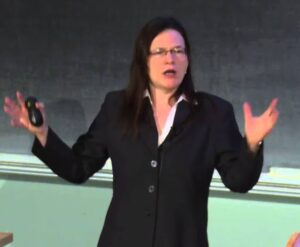
|
Lydia Bieri (University of Michigan) Title: Black Hole Formation Abstract: Can black holes form through the focusing of gravitational waves? This was an outstanding question since the early days of general relativity. In his breakthrough result of 2008, Demetrios Chrstodoulou answered this question with “Yes!” In order to investigate this result, we will delve deeper into the dynamical mathematical structures of the Einstein equations. Black holes are related to the presence of trapped surfaces in the spacetime manifold. Christodoulou proved that in the regime of pure general relativity and for arbitrarily dispersed initial data, trapped surfaces form through the focusing of gravitational waves provided the incoming energy is large enough in a precisely defined way. The proof combines new ideas from geometric analysis and nonlinear partial differential equations as well as it introduces new methods to solve large data problems. These methods have many applications beyond general relativity. D. Christodoulou’s result was generalized in various directions by many authors. It launched mathematical activities going into multiple fields in mathematics and physics. In this talk, we will discuss the mathematical framework of the above question. Then we will outline the main ideas of Christodoulou’s result and its generalizations, show relations to other questions and give an overview of implications in other fields. |
May 5, 2020 | 3:00pm ET
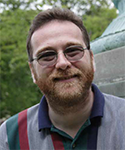
|
Pavel Etingof (MIT) Title: Quantum Groups Abstract: The theory of quantum groups developed in mid 1980s from attempts to construct and understand solutions of the quantum Yang-Baxter equation, an important equation arising in quantum field theory and statistical mechanics. Since then, it has grown into a vast subject with profound connections to many areas of mathematics, such as representation theory, the Langlands program, low-dimensional topology, category theory, enumerative geometry, quantum computation, algebraic combinatorics, conformal field theory, integrable systems, integrable probability, and others. I will review some of the main ideas and examples of quantum groups and try to briefly describe some of the applications. |
May 6, 2020 | 1:00pm ET

|
Robert Griess (University of Michigan) Title: My life and times with the sporadic simple groups Abstract: Five sporadic simple groups were proposed in 19th century and 21 additional ones arose during the period 1965-1975. There were many discussions about the nature of finite simple groups and how sporadic groups are placed in mathematics. While in mathematics grad school at University of Chicago, I became fascinated with the unfolding story of sporadic simple groups. It involved theory, detective work and experiments. During this lecture, I will describe some of the people, important ideas and evolution of thinking about sporadic simple groups. Most should be accessible to a general mathematical audience. |
May 22, 2020 | 12:30pm ET
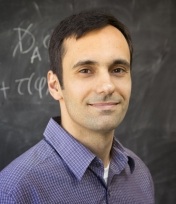
|
Ciprian Manolescu (Stanford) Title: Four-dimensional topology Abstract: I will outline the history of four-dimensional topology. Some major events were the work of Donaldson and Freedman from 1982, and the introduction of the Seiberg-Witten equations in 1994. I will discuss these, and then move on to what has been done in the last 20 years, when the focus shifted to four-manifolds with boundary and cobordisms. Floer homology has led to numerous applications, and recently there have also been a few novel results (and proofs of old results) using Khovanov homology. The talk will be accessible to a general mathematical audience. |
May 22, 2020 | 2:00pm ET

|
Bong Lian (Brandeis) Title: From string theory and Moonshine to vertex algebras Abstract: This is a brief survey of the early historical development of vertex algebras, beginning in the seventies from Physics and Representation Theory. We shall also discuss some of the ideas that led to various early formulations of the theory’s foundation, and their relationships, as well as some of the subsequent and recent developments. The lecture is aimed at a general audience. |

